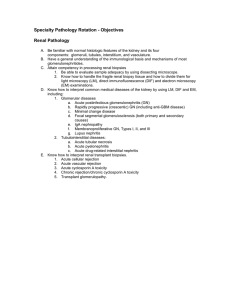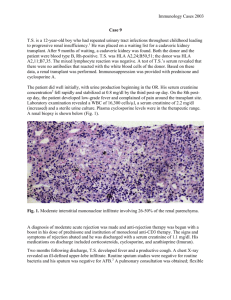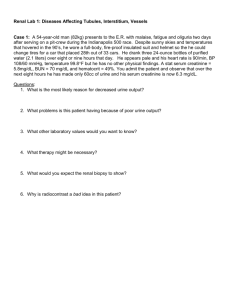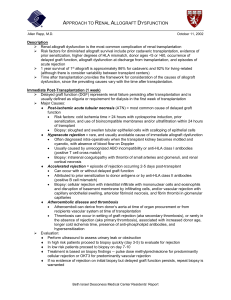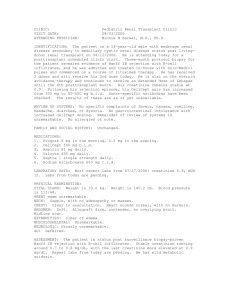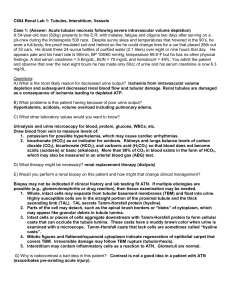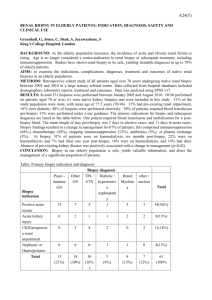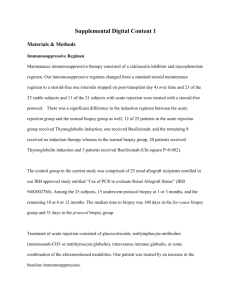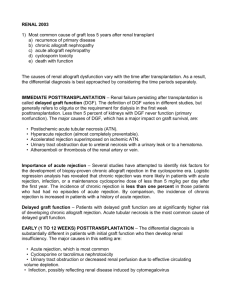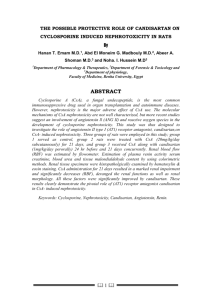FRACP 2002 Renal
advertisement
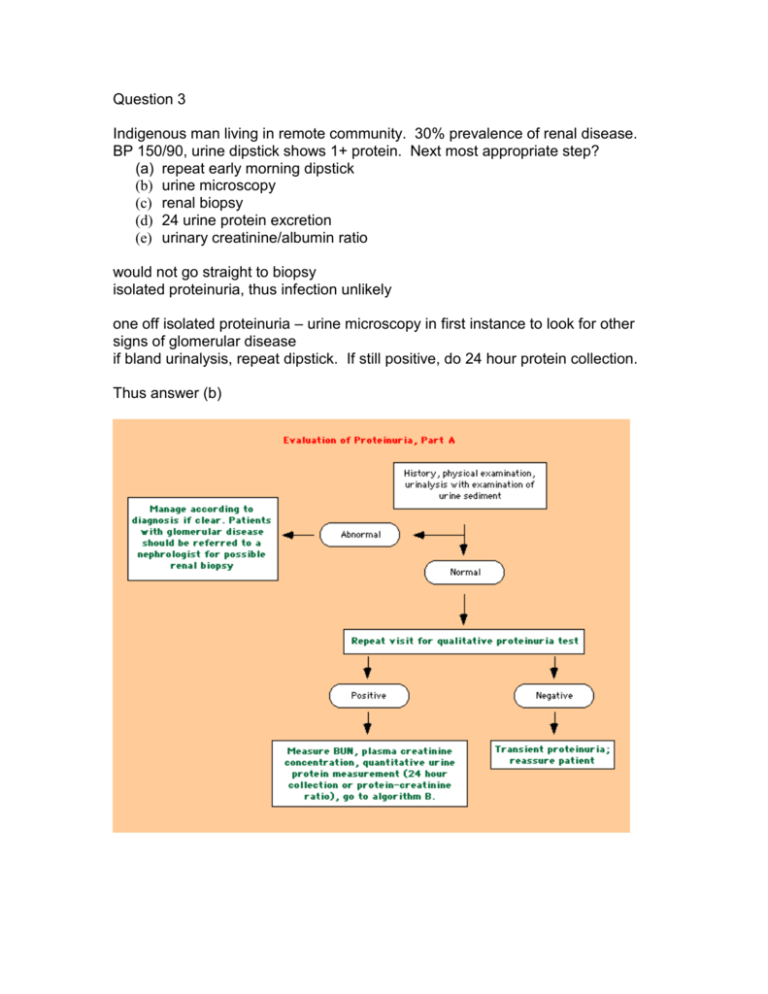
Question 3 Indigenous man living in remote community. 30% prevalence of renal disease. BP 150/90, urine dipstick shows 1+ protein. Next most appropriate step? (a) repeat early morning dipstick (b) urine microscopy (c) renal biopsy (d) 24 urine protein excretion (e) urinary creatinine/albumin ratio would not go straight to biopsy isolated proteinuria, thus infection unlikely one off isolated proteinuria – urine microscopy in first instance to look for other signs of glomerular disease if bland urinalysis, repeat dipstick. If still positive, do 24 hour protein collection. Thus answer (b) Question 4 Renal transplant 50 days ago. Creatinine increased from 0.10 to 0.18. urine output 800mL/day. Next best investigation? (a) renal biopsy (b) urine microscopy (c) creatinine/alb ratio (d) US kidneys (e) Captopril scan Acute Rejection suspected due to rising Cr and decreased UO Do US initially to exclude obstruction, then need biopsy. DIAGNOSIS — The presence of acute renal allograft rejection should be suspected in every transplant patient with a rising serum creatinine. The associated clinical signs include decreased urine output and increased blood pressure. Fever, graft pain and/or tenderness, and graft swelling are uncommon in the cyclosporine era. Most episodes of acute rejection occur within the first six months after transplantation, with many such episodes occurring early after surgery. To help detect such events, frequent monitoring of the serum creatinine concentration is essential. Among stable adult allograft recipients, the following is one recommended strategy relating to the timing of serum creatinine concentration measurement: Twice weekly in the first month post-transplant Weekly in the second month Biweekly in the third and fourth months Monthly, beginning in the fifth month to the end of the first year Every two months for the second year Every three to four months, beginning in the third year Approximately 8 percent of patients with functioning grafts have a first episode of rejection after one year. Noncompliance with medical therapy or low cyclosporine levels are often associated with this complication. The differential diagnosis includes ongoing ischemic acute tubular necrosis (ATN), cyclosporine nephrotoxicity, urinary tract obstruction, rarely acute arterial or venous thrombosis, and interstitial nephritis due to drugs or infection (eg, human polyoma virus, cytomegalovirus, and parvovirus B19). Urinary tract obstruction can usually be ruled out by renal ultrasonography which should be performed in every transplant recipient with a rising serum creatinine; false negative results are rarely seen when local scarring limits the degree of ureteral and pelvic dilatation. Although acute rejection is associated with elevations in the resistive and pulsatile indices as detected by duplex sonography, these findings are nonspecific; increased indices may also be observed in cyclosporine nephrotoxicity as well as acute tubular necrosis and renal vein obstruction. Acute vascular occlusion can be excluded by a radionucleotide flow scan. The most difficult issue related to the diagnosis of acute rejection is the clinical distinction from cyclosporine nephrotoxicity and, in patients with delayed allograft function, from acute tubular necrosis. Cyclosporine and tacrolimus induce renal vasoconstriction and can worsen ischemic injury to the grafts. Establishing the correct diagnosis is important, since treatment is so different: Lowering the drug dose for cyclosporine nephrotoxicity, which is usually reversible at this stage No specific therapy for ATN Optimizing immunosuppression for acute rejection If the ultrasonogram does not show hydronephrosis and cyclosporine levels are not elevated, we routinely perform a renal biopsy in patients with delayed allograft function that persists for one week post-transplantation and even earlier (day three to five) to rule out occult rejection in "high risk" patients who are highly sensitized or who have received a second transplant. We empirically treat with pulse corticosteroids pending the biopsy results. Duplex Doppler scanning ultrasound, although less invasive, is neither sufficiently sensitive nor specific in the diagnosis of acute rejection. An alternative approach that has been advocated in place of the standard renal biopsy is a fine-needle-aspiration biopsy with subsequent cytological examination of infiltrating cells of the allograft. This technique has been reported to have more than 90 percent sensitivity and specificity for the diagnosis of acute cellular rejection in experienced centers and, because of the low morbidity, can be performed repeatedly to follow the response to therapy [11]. Unfortunately, there have been no recent advances in the use of this technique and therefore it is not used in clinical practice.
